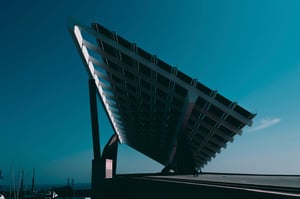This post is the fifth part of our blog series on NEOcore, game-changing power electronics cooling technology. With these posts, we dive deeper into the technological innovations, unique features, and practical customer benefits of NEOcore technology. You'll get an inside look at real-world use cases with actual, measured results from real power electronics projects.
Thermal Management as Competitive Advantage
Thermal management impacts far more than component reliability—it shapes product architecture, development timelines, and competitive positioning. Companies that adopt advanced cooling earlier gain technical advantages that compound into commercial benefits.
When analyzing total cost of ownership, CooliBlade solutions consistently outperform conventional technologies across production, logistics, and long-term operation. The higher the production volumes, the greater the economic advantage.

Performance That Reduces Costs
Superior thermal performance translates directly into lifecycle savings. NEOcore extends component lifespan for IGBT modules, SiC devices, PCBs, and thermal interface materials. It minimizes derating requirements, ensuring products maintain full rated performance. Lower operating temperatures reduce field failures that impact OPEX and brand reputation.
The numbers tell the story: up to 50% power improvement, up to 50% lower cooling system weight, and up to 25°C lower component temperatures. These improvements compound across the product lifecycle.
Material Economics: Why Aluminum Beats Copper
Most heat pipes use copper—costly and complex to manufacture at scale. CooliBlade uses aluminum-based cooling for lower cost, easier availability, and better scalability. From a material cost perspective, aluminum significantly outperforms copper. At high production volumes, this advantage multiplies, making NEOcore the most cost-efficient option in power electronics cooling.
The hollow-core, compact design reduces raw material usage and delivers up to 50% lighter weight than standard aluminum heat sinks. Direct cost savings flow through the entire value chain: raw materials, refining, transport, warehousing, and final assembly. The sealed, maintenance-free system eliminates pumps, leaks, and scheduled maintenance.
For customers, savings extend beyond the cooling system. Smaller, lighter housings reduce enclosure costs. In some cases, fewer frame variants cover entire product families with multiple power ranges. Greater flexibility in IGBT and SiC module selection enables additional cost optimization.
Scalable Production for Real-World Volumes
CooliBlade uses carefully selected manufacturing processes to balance performance and cost. Aluminum extrusion produces complex cross-sections efficiently, cut to length, activated, and tested. ULTIMA heat sinks are modularly assembled in three stages with semi-automated stations, delivering up to 100,000 units per year from a single line. Full automation can double that capacity quickly.
This scalable production approach ensures cost efficiency at low, medium, and high volumes, supporting power electronics designers across industries from renewable energy and EV charging to industrial drives and telecoms.
Cost Efficiency as Competitive Edge
Cost-efficient cooling technology enhances thermal performance while enabling measurable savings in materials, logistics, production, and lifecycle costs. By combining aluminum-based innovation, compact design, and scalable European manufacturing, NEOcore helps customers achieve faster, more cost-efficient production scaling.
As electrification accelerates globally, cost efficiency in power electronics cooling determines competitive position. Better cooling enables higher power density, smaller products, longer lifetimes, and faster time-to-market. Poor cooling creates field failures, warranty claims, and lost customers.
Stay tuned for the final part of our NEOcore series as we dive deeper into the innovations and real-world results of NEOcore technology.
Talk to our thermal engineers about your next power converter project.
Contact our cooling experts | Learn more about NEOcore cooling technology
